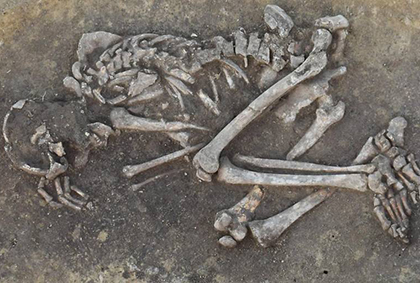HEAS in the News – oldest plague victims in Austria identified by HEAS Member Katharina Rebay-Salisbury
More On Article
- HEAS Members Publish Nature Communications Article with HEAS Speaker
- Ancient DNA reveals diverse community organizations in the 5th millennium BCE Carpathian Basin
- HEAS Member Awarded GO.INVESTIGATIO Fellowship by the Austrian Academy of Sciences
- A comparative archaeometric study of Late Bronze Age Black Lustrous and Red Lustrous Wheel-made wares from the Eastern Mediterranean
- Late Paleolithic whale bone tools reveal human and whale ecology in the Bay of Biscay.

Within the framework of an interdisciplinary analysis of the Early Bronze Age burials from Drasenhofen, evidence was found for what are currently the oldest plague victims in Austria. The male individuals, who died at the age of 23–30 and 22–27 years, respectively, were buried not far from each other in the north-easternmost and south-easternmost grave of the row cemetery comprising a total of 22 graves. Despite the spatial and temporal proximity, the genetic pathogen analyses detected two different strains of plague bacteria (Yersinia pestis). Thus, it was not one infection that was transmitted within the Bronze Age group, but two independent infection events.
In this article, we present the phylogenetic positions of these two Yersinia pestis strains together with other prehistoric, historic and modern plague genomes known so far, discuss biological basics of transmission and possible transmission routes, and attempt a cultural-historical interpretation in comparison with similar anthropological and archaeological contexts.
https://austriaca.at/bronzezeit-pest-in-drasenhofen
Read media coverage below:
https://science.orf.at/stories/3219896/
https://www.derstandard.at/story/3000000175379/aelteste-pesttote-oesterreichs-gefunden